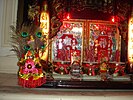
The Tai ethnic group migrated into mainland Southeast Asia over a period of centuries. The word Siam may have originated from Pali, Sanskrit श्याम, or Mon ရာမည, with likely the same root as Shan and Ahom. Xianluo was the Chinese name for the Ayutthaya Kingdom, merged from Suphannaphum city-state, centered in modern-day Suphan Buri; and Lavo city-state, centered in modern-day Lop Buri. To the Thai, the name of their country has mostly been Mueang Thai.

The Mon are an ethnic group who inhabit Lower Myanmar's Mon State, Kayin State, Kayah State, Tanintharyi Region, Bago Region, the Irrawaddy Delta, and several areas in Thailand. The native language is Mon, which belongs to the Monic branch of the Austroasiatic language family and shares a common origin with the Nyah Kur language, which is spoken by the people of the same name that live in Northeastern Thailand. A number of languages in Mainland Southeast Asia are influenced by the Mon language, which is also in turn influenced by those languages.

The Ayutthaya Kingdom or the Empire of Ayutthaya was a Mon and later Siamese kingdom that existed in Southeast Asia from 1351 to 1767, centered around the city of Ayutthaya, in Siam, or present-day Thailand. European travellers in the early 16th century called Ayutthaya one of the three great powers of Asia. The Ayutthaya Kingdom is considered to be the precursor of modern Thailand, and its developments are an important part of the history of Thailand.
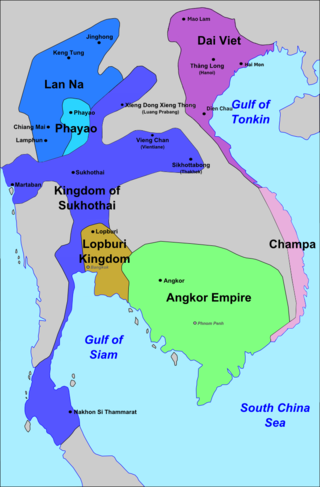
The Sukhothai Kingdom or the Northern Cities was a post-classical Siamese kingdom (mandala) in Mainland Southeast Asia surrounding the ancient capital city of Sukhothai in present-day north-central Thailand. The kingdom was founded by Si Inthrathit in 1238 and existed as an independent polity until 1438, when it fell under the influence of the neighboring Ayutthaya after the death of Borommapan.

Thai New Year or Songkran, also known as Songkran Festival, Songkran Splendours, is the Thai New Year's national holiday. Songkran is on 13 April every year, but the holiday period extends from 14 to 15 April. In 2018 the Thai cabinet extended the festival nationwide to seven days, 9–16 April, to enable citizens to travel home for the holiday. In 2019, the holiday was observed 9–16 April as 13 April fell on a Saturday. In 2024, Songkran was extended to almost the entire month, starting on the first of April, and ending on the twenty-first, departing from the traditional 3-day format. And with the New Year of many calendars of Southeast and South Asia, in keeping with the Buddhist calendar and also coincides with New Year in Hindu calendar such as Vishu, Bihu, Pohela Boishakh, Pana Sankranti, Vaisakhi. The New Year takes place at around the same time as the new year celebrations of many regions of South Asia like China, India, Laos, Cambodia, Myanmar, Nepal, and Sri Lanka.

The Thai solar calendar was adopted by King Chulalongkorn in 1888 CE as the Siamese version of the Gregorian calendar, replacing the Thai lunar calendar as the legal calendar in Thailand. Years are now counted in the Buddhist Era (B.E.): พุทธศักราช, พ.ศ.RTGS: Phutthasakkarat which is 543 years ahead of the Gregorian calendar.
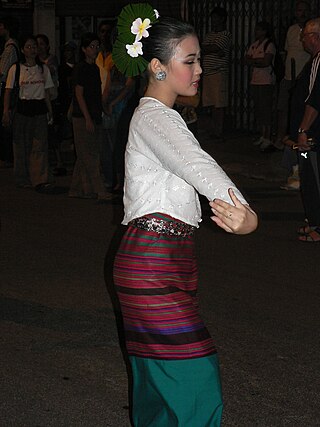
The Northern Thai people or Tai Yuan, self-designation khon mu(e)ang are a Tai ethnic group, native to nine provinces in Northern Thailand, principally in the area of the former kingdom of Lan Na. As a Tai group, they are closely related to Tai Lü and Tai Khün with regards to common culture, language and history as well as to Thailand's dominant Thai ethnic group. There are approximately 6 million Tai Yuan. Most of them live in Northern Thailand, with a small minority 29,442 living across the border in Bokeo Province of Laos. Their language is called Northern Thai, Lanna or Kham Mueang.

Dvaravati was an ancient Mon political principality from the 6th century to the 11th century, located in the region now known as central Thailand, and was speculated to be a succeeding state of Lang-chia or Lang-ya-hsiu (หลังยะสิ่ว). It was described by Chinese pilgrims in the middle of the 7th century as a Buddhist kingdom named To-lo-po-ti situated to the west of Isanapura (Cambodia), to the east of Sri Ksetra (Burma), and adjoined Pan Pan in the South. Its northern border met Chia-lo-she-fo, which was speculated to be either Kalasapura, situated along the coast of the Bay of Bengal somewhere between Tavoy and Rangoon, or Canasapura in modern northeast Thailand. Dvaravati sent the first embassy to the Chinese court in around 605–616.
The culture of Thailand is a unique blend of various influences that have evolved over time. Local customs, animist beliefs, Buddhist traditions, and regional ethnic and cultural practices have all played a role in shaping Thai culture. Thainess, which refers to the distinctive qualities that define the national identity of Thailand, is evident in the country's history, customs, and traditions. While Buddhism remains the dominant religion in Thailand with more than 40,000 temples, Islam, Christianity, and other faiths are also practiced.

Vishu is a Hindu festival celebrating the Malayali New Year in Kerala, Tulu Nadu, and Mahe of India. Vishu falls on the first day of the month of Medam in the Malayalam Calendar. It is the traditional new year, while the Kollam era calendar new year falls on the 1st Chingham.

Loy Krathong is a Thai festival celebrated annually throughout Thailand and in nearby countries with significant South Western Tai cultures. The name could be translated as "to float ritual vessel or lamp," and comes from the tradition of making krathong or buoyant, decorated baskets, which are then floated on a river. Many Thais use the krathong to thank the Goddess of Water and River, Goddess Khongkha or to worship the Holy Buddha's hair pagoda in heaven in Buddhist beliefs. This festival traces its origin back to India.
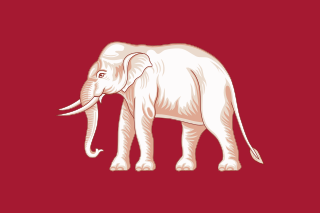
The Rattanakosin Kingdom, the Kingdom of Siam, or the Bangkok Empire, were names used to reference the fourth and current Thai kingdom in the history of Thailand. It was founded in 1782 with the establishment of Rattanakosin (Bangkok), which replaced the city of Thonburi as the capital of Siam. This article covers the period until the Siamese revolution of 1932.

Thai people, Chao Phraya Thai, Central Thai people, Southern Thai people, Siamese, Thai Siam, Tai Noi people, are a Southeast Asian ethnic group native to Thailand. In a narrower sense, the Thais are also a Tai ethnic group dominant in Central and Southern Thailand. Part of the larger Tai ethno-linguistic group native to Southeast Asia as well as Southern China and Northeast India, Thais speak the Sukhothai languages, which is classified as part of the Kra–Dai family of languages. The majority of Thais are followers of Theravada Buddhism.

The Thonburi Kingdom was a major Siamese kingdom which existed in Southeast Asia from 1767 to 1782, centered around the city of Thonburi, in Siam or present-day Thailand. The kingdom was founded by Taksin the Great, who reunited Siam following the collapse of the Ayutthaya Kingdom, which saw the country separate into five warring regional states. The Thonburi Kingdom oversaw the rapid reunification and reestablishment of Siam as a preeminient military power within mainland Southeast Asia, overseeing the country's expansion to its greatest territorial extent up to that point in its history, incorporating Lan Na, the Laotian kingdoms, and Cambodia under the Siamese sphere of influence.

The Lavo Kingdom was a political entity (mandala) on the left bank of the Chao Phraya River in the Upper Chao Phraya valley from the end of Dvaravati civilization, in the 7th century, until 1388. The original center of Lavo civilization was Lavo, but the capital shifted southward to Ayodhaya, the port city on the right side of the Ayutthaya island around the 11th century, whereupon the state was incorporated into the Ayutthaya Kingdom in the 14th century.

Pana Sankranti,, also known as Maha Bishuba Sankranti, is the traditional new year day festival of Odia people in Odisha, India. The festival occurs in the solar Odia calendar on the first day of the traditional solar month of Meṣa, hence equivalent lunar month Baisakha. This falls on the Purnimanta system of the Indian Hindu calendar. It therefore falls on 13/14 April every year on the Gregorian calendar.
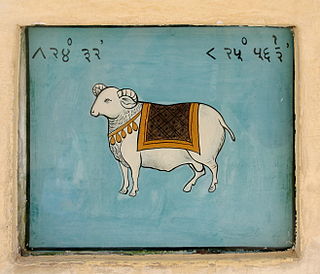
Mesha Sankranti refers to the first day of the solar cycle year, that is the solar New Year in the Hindu luni-solar calendar. The Hindu calendar also has a lunar new year, which is religiously more significant. The solar cycle year is significant in Assamese, Odia, Punjabi, Malayalam, Tamil, and Bengali calendars.
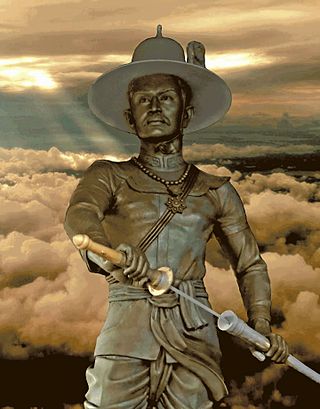
King Taksin the Great or the King of Thonburi was the only king of the Thonburi Kingdom that ruled Thailand from 1767 to 1782. He had been an aristocrat in the Ayutthaya Kingdom and then was a major leader during the liberation of Siam from Burmese occupation after the Second Fall of Ayutthaya in 1767, and the subsequent unification of Siam after it fell under various warlords. He established the city of Thonburi as the new capital, as the city of Ayutthaya had been almost completely destroyed by the invaders. His reign was characterized by numerous wars; he fought to repel new Burmese invasions and to subjugate the northern Thai kingdom of Lanna, the Laotian principalities, and a threatening Cambodia.

The makuṭa, variously known in several languages as makuta, mahkota, magaik, mokot, mongkut or chada, is a type of headdress used as crowns in the Southeast Asian monarchies of today's Cambodia and Thailand, and historically in Indonesia, Malaysia, Sri Lanka, Laos and Myanmar. They are also used in classical court dances in Cambodia, Indonesia, Malaysia, Sri Lanka and Thailand; such as khol, khon, the various forms of lakhon, as well as wayang wong dance drama. They feature a tall pointed shape, are made of gold or a substitute, and are usually decorated with gemstones. As a symbol of kingship, they are featured in the royal regalia of both Cambodia and Thailand.
The traditional New Year in many South and Southeast Asian cultures is based on the sun's entry into the constellation Aries. In modern times, it is usually reckoned around 14 April.





